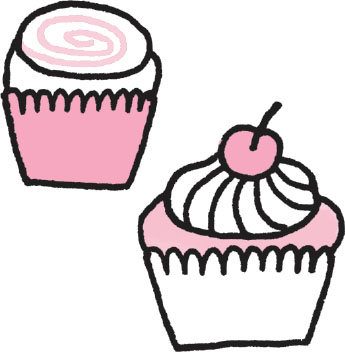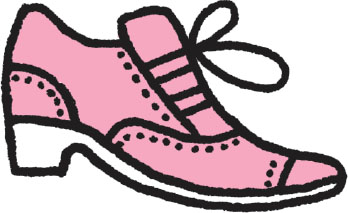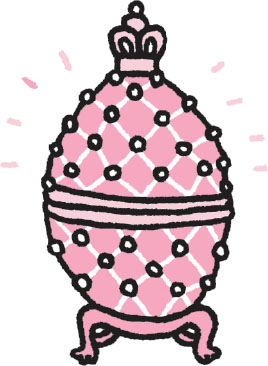5
Chok Chok:
Moisturizing and the Art of Dewy Skin
Koreans love the dewy look so much that there’s a phrase for it: chok chok. Chok chok doesn’t just pertain to skin, but is used to describe something that is literally moist. While it’s much desired in Korea, it’s something that Western beauty has historically tried to cover up with mattifying primers, foundations, and powders—whatever kept the skin as matte as possible. But once you experience skin that is chok chok, you’ll decide that it not only feels better; it looks better, too.
Glowy vs. an Oil Slick
In Seoul, I frequently met my friends for brunch in Garosu-gil, a popular treelined street with endless cafés, restaurants, and boutiques. Over a table covered with warm lattes and pastries, our conversations were the usual chitter-chatter: about the couple who broke off their engagement because of a bad reading from a fortune teller, the latest mat-jib (“delicious house,” or highly praised restaurant), and, of course, our favorite topic, beauty. We swapped product recommendations as if we were Wall Streeters with stock tips, and sprinkled through our conversations were declarations of the next big thing: “I swear by this new cushion compact—it’s so inexpensive and was sold out for weeks!” Also, talking about someone’s pibu (the Korean word for “skin”) was a crucial part of sizing them up: “He’s dating this new girl. Have you seen her amazing pibu?”
Inevitably, someone would bring out a phone to illustrate her point, and at first I couldn’t really wrap my head around what was causing so much talk and envy. Sure, so-and-so’s ex-boyfriend’s new girlfriend’s skin looked amazing, but wasn’t it just a tad too shiny? Last I’d checked, greasy was not in. Isn’t that what they make oil-blotting papers for?

But the more time I spent in Korea, and the more women I observed, the more I realized that their foreheads weren’t oil slicks, just glowingly moist. It was the opposite of matte—healthy, baby smooth, and radiant. For someone who spent the greater part of her life with a powder puff to her face, desperately blotting, I was now questioning everything I knew (about skin, at least).
I didn’t want to jump on any bandwagon, but when I thought about chok chok, I could see why it would be the permanent future of skin and not just a passing fad. I’d been used to mattifying my face to the point of cracking, but when I started to pay attention and began using hydrating skin products, I couldn’t just see the difference—I could feel it. My face felt fresh, and I no longer had to worry that the lower half would fall off if I laughed too hard at a joke.
At this point, you’re familiar with cleansing, toning, and exfoliating, all of which are important pieces in the skin-care game. But the real game changer? Hydrating and moisturizing. Pretty much everything you’ve learned up to this phase is just a prelude, and those products were just the opening act. The headliners on your beauty counter are the ones that hydrate your skin and help it retain moisture.
If you’re part of the YouTube generation like me (and even if you’re not), it’ll probably help to get a visual. So here it is: Think of your skin as your favorite leather shoe (I know, I know, but bear with me . . .). Without properly maintaining the leather with a polish, the leather will eventually start to crack or even start peeling. The shoe’s texture will be rough and its color will be lackluster. No one—I repeat, no one—wants her face to look like an old leather shoe.

But your skin is actually similar to this leather in some ways: If you take care of it and keep it moist and supple, you’ll see a difference over time. Without a seal to keep the moisture in and protect your skin, you’ll really see life’s wear and tear right there on your face.
Adding hydration to your skin plumps it up and fills in the gaps, which helps reduce the visibility of fine lines. No, this doesn’t mean that you can slap on some lotion and see all your lines and wrinkles magically disappear, but lines will be more apparent on skin that is consistently dehydrated.
But let’s set vanity aside for a moment and pretend you don’t care about wrinkles: Moisturizing is still important because it helps keep your skin healthy. Without extra hydration, daily environmental exposures (especially those you’re exposed to after you’ve stripped away your natural oils by washing twice a day) can cause tiny fissures in the outermost layer of the epidermis (the part of your skin called the stratum corneum) that make it more susceptible to bacteria and skin disorders. Your skin can become itchy, flaky, and irritated, and you might even see more acne crop up. Think of your stratum corneum as a tiny Fabergé egg (or brand-new iPhone): It’s very thin and delicate, and you must protect it!

Day and Night Moisturizing: This Is How You Do It
Unfortunately, you can’t just splash your face with water and call it a day, as this can actually have the opposite of the desired effect and dry your skin out even more. Water molecules are too large to penetrate your skin, but are great at drawing water out of it. If our skin could really absorb water that easily, every time we took a shower we’d puff up like a blowfish—and let’s all be thankful that doesn’t happen.
Formulated moisturizers work because they hydrate the skin with ingredients that have smaller molecules to draw moisture to the skin and then retain it once it’s there. And while dousing your face with water won’t actually moisturize it, products are actually absorbed better when applied on a damp face.
Just as I explained in chapter three about the dry sponge vs. the damp sponge, it’s beneficial to start with damp skin. I’ve gotten in the habit of applying my skin-care products right when I step out of the shower (before I even blow-dry my hair), and that really enhances the absorption of everything, from my toner to my night cream.
There is also an order in which you should apply your skin-care products, starting with the lightest consistency (such as liquid toners) and then moving toward the heaviest (like a rich cream). Applying the heaviest cream first would almost create an oily barrier that would make it harder for the others to penetrate. This is why most toners are formulated to be very watery, since they’re one of the first products you apply.
Your Skin Deserves a Treat(ment)
But wait! Before you start tapping in that moisturizer, you might want to use a treatment product that’s formulated to specifically target skin issues such as dullness, brown spots, redness, or fine lines.
Before you throw your hands up in the air and curse the beauty gods for sending you yet another step in your regimen, keep in mind that treatments are entirely up to you and what your skin needs. If your skin is in tip-top shape and you don’t have any of the above concerns, bravo to you, and you can make the seamless move from toner to moisturizer. Even if you do decide to add a treatment to your morning or night routine, you don’t have to use it every day.
In defense of yet another product, I do have to say that treatments are a huge part of the Korean skin-care routine, and most are used not just to treat, but to prevent. These skin-care products are the heart of the Korean skin-care routine, because they utilize the most powerful ingredients and are specifically designed to combat and lessen the signs of aging. Most of these products will be labeled as an essence, ampoule, serum, or booster. Let me break it down for you—it can be tricky to keep track!
Essences
Essences are a popular skin care category in Korea—many Korean people believe it is the heart of their regimen! Generally, essences have a thinner and more watery consistency than serums and ampoules, but most of them contain active ingredients to help hydrate, brighten, even out skin tone, firm skin, and reduce the visibility of wrinkles. You’ll use these after toning and before moisturizing, and you’ll pat them over your entire face.
Ampoules, Serums, and Boosters
Though products may be labeled as ampoules, serums, or boosters, all are generally used the same way and for the same range of purposes. They have a thicker consistency with a more potent concentration of ingredients (think of them as an essence reduction) and are frequently used as spot treatments, such as to target brown spots on your cheeks or fine lines around your mouth. They frequently come in glass bottles with droppers, so you can squeeze out only as much as you need. If you’re adding one of these to your routine, you’ll use it after your toner or essence, wait a few minutes for it to absorb, and then follow with your moisturizers. If you’re using a treatment that increases sun sensitivity (like something with retinol), you might want to use it only as part of your nighttime routine to avoid UV exposure.
Treatments are one of the most personalized parts of a skin-care routine, so you might want to try a few different things, or get a consultation from a knowledgeable friend or esthetician, to find a product that is right for your specific needs and your skin type.
#sokosecret: Beauty companies are constantly blurring the lines between all four treatment products (essences, ampoules, serums, and boosters) making it increasingly difficult to define them. It’s up to you to read the major ingredients to see what the product will do for you.
Your Personal Hydration Station
There are a plethora of moisturizers at your disposal to increase hydration and get you that much-desired chok chok. Deciphering what a moisturizer does for you, and which is right for you, often comes down to texture and function. Moisturizers usually contain humectants, which both prevent the loss of moisture and attract it to the skin, and/or lipids, which improve hydration and make skin smooth. Algae, hyaluronic acid, glycerin, sodium PCA, sorbitol, and propylene glycol are common humectants. As their names would imply, phospholipids and glycosphingolipids are lipids.
A moisturizer by any other name is still a moisturizer, but different types and formulations do different things and target different skin concerns. And while moisturizing should always be a part of your routine, you might want to use different products in the morning from those at night.
Emulsions
This term is used to describe a mixture of two or more liquids that are not entirely mixable—think oil and vinegar for salad dressing, or, in this case, oil and water for your skin. Most beauty lines in Korea include an emulsion, which is typically a light moisturizer formulated with tiny droplets of oil suspended in a water base. Since emulsions are so light, they are recommended for oily and combination skin types.
Lotions
An in-between moisturizer, a lotion is heavier than an emulsion and lighter than a cream. Most lotions are suitable for all skin types.
Creams
A cream is usually more oil than water, which means it is very rich and emollient. Many creams are formulated with skin-repairing ingredients to lock in moisture and nourish the skin while you sleep, which is why so many creams are marketed for use at night. Creams are good for dry and aging skin types.
Gel Creams
Gel creams absorb quickly and are lightweight because they are water based, which helps minimize clogged pores. These creams are great for hydrating oilier skin that is prone to breakouts and acne.
Facial Oils
Facial oils are used after toning or exfoliating and are applied directly on the skin. You can also add a few drops to your regular face lotion to up its powers when your skin is feeling especially dry or flaky. In general, facial oils aren’t recommended for oily skin types.
Sleeping Packs
A sleeping pack, sometimes called a sleeping mask, is not a cloth mask that you use to cover your eyes while you get some beauty sleep. In the Korean beauty world, it’s a product you use once or twice a week in the evenings (in place of your night cream) to give your skin a spa day’s worth of hydration. Depending on the product, a sleeping pack can also help make skin brighter or firmer. You put it on like lotion, spreading a thin layer across your entire face, but unlike a night cream, you won’t pat it in. Your skin will slowly absorb its hydration while you sleep, and then you wash it off in the morning. Sleeping packs are usually formulated with a gel-like consistency and go on clear, so don’t worry—it won’t look like you’re sleeping with frosting on your face. You will want to try to fall asleep on your back, but most sleeping packs aren’t really as messy as they might sound, so it’s NBD if you toss and turn a bit during the night.
In Korea, “sleeping beauty” is a huge product category. During the day, your skin is working to protect the rest of your body, and then it repairs itself at night. It does most of its restoration between 10 P.M. and 4 A.M., so you’ll see maximum benefit from any hydrating products you use during these hours.
#sokosecret: Still dry and tight even with the right moisturizer? Like most Korean households, invest in a humidifier that will add moisture to the air.
Sheet Masks
Sheet masks are one of the most popular and well-known beauty products to come out of Korea, and I’ve separated sheet masks from the essences and sleeping masks because they’re a stand-alone beauty innovation.
Everyone and their mom are using sheet masks in Korea. You’ll be hard-pressed to find a household without a sheet mask handy, and they’ve quickly become one of my favorite ways to pamper myself. These face masks are not to be confused with the paper nose and mouth coverings doctors wear when seeing a patient, or that people use on days when dust levels are high. Those are precautionary hardware. Sheet masks are beauty superstars.

Sheet masks are shaped to fit your face, with eyes, nose, and mouth cutouts, and they’re drenched in the kind of active ingredients you would find in a bottle of essence. Most make you look like Jason from Friday the 13th (and provide infinite selfie opportunities), but you can also find them in colors, patterns, or even a pig or dragon face.
The two most popular kinds of sheet masks are made out of a cotton-type material (microfiber) or gel (hydrogel). Most hydrogel sheet masks are 100 percent water soluble, making it extra hydrating for your skin.
When it comes to getting that dewy glow, I find sheet masks to be the most effective. They work so well because while the sheet rests on your face, it acts like an icebreaker at an awkward party and forces the antioxidants and vitamins to mingle with your skin. With a lot of the skin-care products you put on your face, some of the ingredients will evaporate before they even have the chance to penetrate your epidermis, but a sheet mask helps lock the nutrients in. Peeling it off is somewhat of an unveiling, and you’ll see your face brighter, softer, and hydrated to perfection.
Sheet masks are relatively inexpensive, and the fun is in the variety. Think about winter, when cold winds and your heater on full blast severely dehydrate your skin. That’s when you reach for a sheet mask with hyaluronic acid to bind moisture to the skin and antioxidants, such as vitamin C, to fight free radical damage and provide cell-communicating ingredients that help diminish the appearance of fine lines. In the middle of the summer, you can grab one to nourish the skin or to help treat breakouts. Sheet masks can be labeled by their specific ingredients (everything from blueberries and vitamin C to collagen and snail mucin) or by the skin conditions that they target. Whatever it is you’re looking for, though, you’ll find it, and it’s unlikely that you’ll leave the store with just one.
INGREDIENT SPOTLIGHT:
Snail Mucin
Snail mucin is not the oozy, gooey slime that you may think it is. It’s an extract packed with nutrients such as hyaluronic acid, glycoprotein enzymes, antimicrobial and copper peptides, and proteoglycans—all ingredients commonly used in beauty products and proven to be beneficial to the skin. These ingredients have been known to stimulate the formation of collagen and elastin (that is, they’re antiaging), repair damaged skin, and restore hydration, which has made snail mucin skin-care products very popular in Korea. (Snails are not harmed in this process!)

Companies are now making sheet masks for all sorts of body parts. You can find ones that treat ashy elbows or firm your boobs and butt (I’d say no selfies on these kinds of sheet masks, but maybe that’s just me).
#sokosecret: In Korea, they take “selcas,” which is a portmanteau of the English words “self” and “camera.” Common selca poses:
1. Hand on cheek to make face look slightly smaller
2. Puffing out cheeks to look endearing or cute
3. Selfie with stickers
Now share or post!
When I lived in Korea, I had the luxury of cheap weekly facials, but if you keep up with your skin-care routine at home by using sheet masks and other effective products, then you can frequently forgo the facials, which are definitely not cheap here in the United States. It’s entirely up to you how often you use sheet masks—they’re great for when you have twenty minutes to spare. Use them in lieu of your regular treatment, after cleansing and before moisturizing, once or twice a week, and in winter, when my skin feels extra tight and dry, I up that to about two to three times.
When it’s hot or humid out, you can pop a sheet mask in the fridge so that when you’re ready to use it, it’s instantly cooling. Traveling? Bring one on an overnight flight so that your skin is charged up when you land. Big event where you have to look glowing? No need to rush off to an expensive facial to get a hydration boost—a sheet mask can let you do it in the comfort of your own home, and from anywhere between $1 to $10. Once you start, you’ll find yourself a big believer in the sheet mask lifestyle, extolling the virtues of sheet masks to anyone who’ll listen.
Since sheet masks are fun and relatively cheap, they’re a great gateway into the world of skin care. So if you have a boyfriend who washes his face with the dish soap or a best friend who thinks SPF is NBD, slip them a sheet mask. You could be introducing them to a whole new world.
A QUICK SHEET MASK HOW-TO (IN CASE YOUR INSTRUCTIONS ARE IN KOREAN)
After double cleansing and toning (see chapter three):
1. Tear open the pouch at the top and pull out the mask. The mask will be dripping wet—have a towel handy to wipe up the drips.
2. Sometimes masks will come with a plastic backing; don’t forget to remove it. Unless the brand specifically mentions what side of the mask you should place on your face, it shouldn’t matter what side you use. Unfold the mask and place it on your face, aligning the holes with your eyes, nose, and mouth.
3. Apply the excess essence in the pouch and the mask to your neck, shoulders, and hands. Those essences are good for your skin, so don’t let any go to waste!
4. Take a power nap, read a book, swipe left or right, or simply zone out for about twenty to thirty minutes.
5. When you’re ready, just peel off the mask and discard it. There’s no reason for you to wash off the essence that is left behind, because it is good for your skin! When you look at your skin in the mirror, it should look brighter and slightly plumper from the moisture it just absorbed. Also, touch it. Touch it! It should feel velvety smooth and, dare I say, chok chok?
6. Finish off the routine with a moisturizer (and SPF if you’re heading out).
SKIN STORIES: Kim Ju Won
SHEET MASK EXPERT AND CEO OF IM1NE, A MASK MANUFACTURER
Sheet masks started becoming popular in Korea about a decade ago. Now they’re a standard product offering for every skin-care brand in Korea and even the rest of Asia. There are more than eight hundred varieties of sheet masks on the market now. The most common types are hydrogel—which are 100 percent soluble, so that they slightly melt from the heat of your skin when they’re on your face—and microfiber.
Sheet masks became such an important part of skin care because there was a desire for a product that would effectively hydrate and moisturize, but in a convenient way so that anyone could do it at home.
Your skin’s barrier is made out of natural lipids, and one of the most important functions of skin care is to protect it. When the barrier is damaged, moisture can escape through tiny fissures in the skin, and this can cause flakiness and irritation. Sheet masks are one way to deliver intensive hydrating ingredients to the skin. If you use them consistently two or three times per week, you’ll notice a difference in elasticity and a reduction in fine lines.
